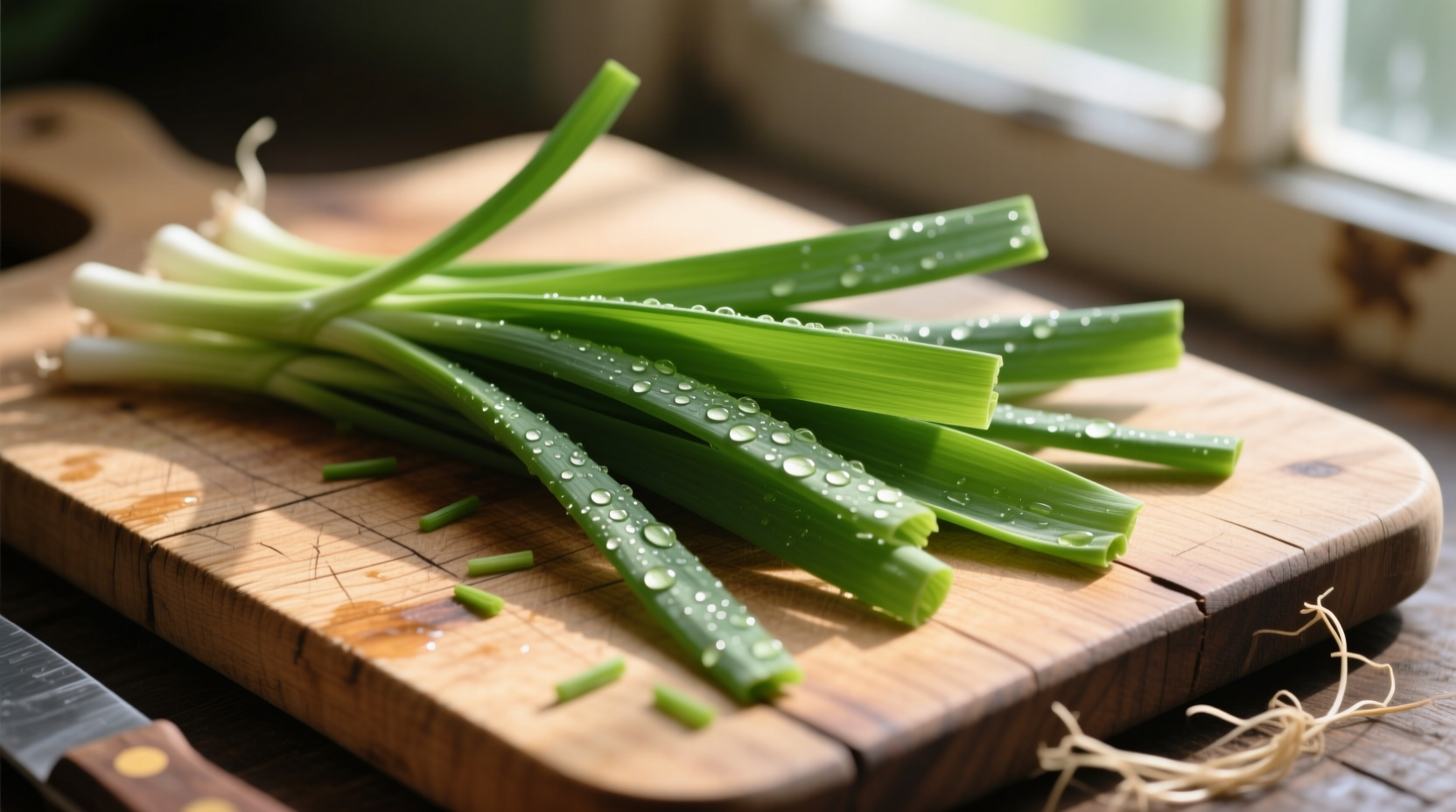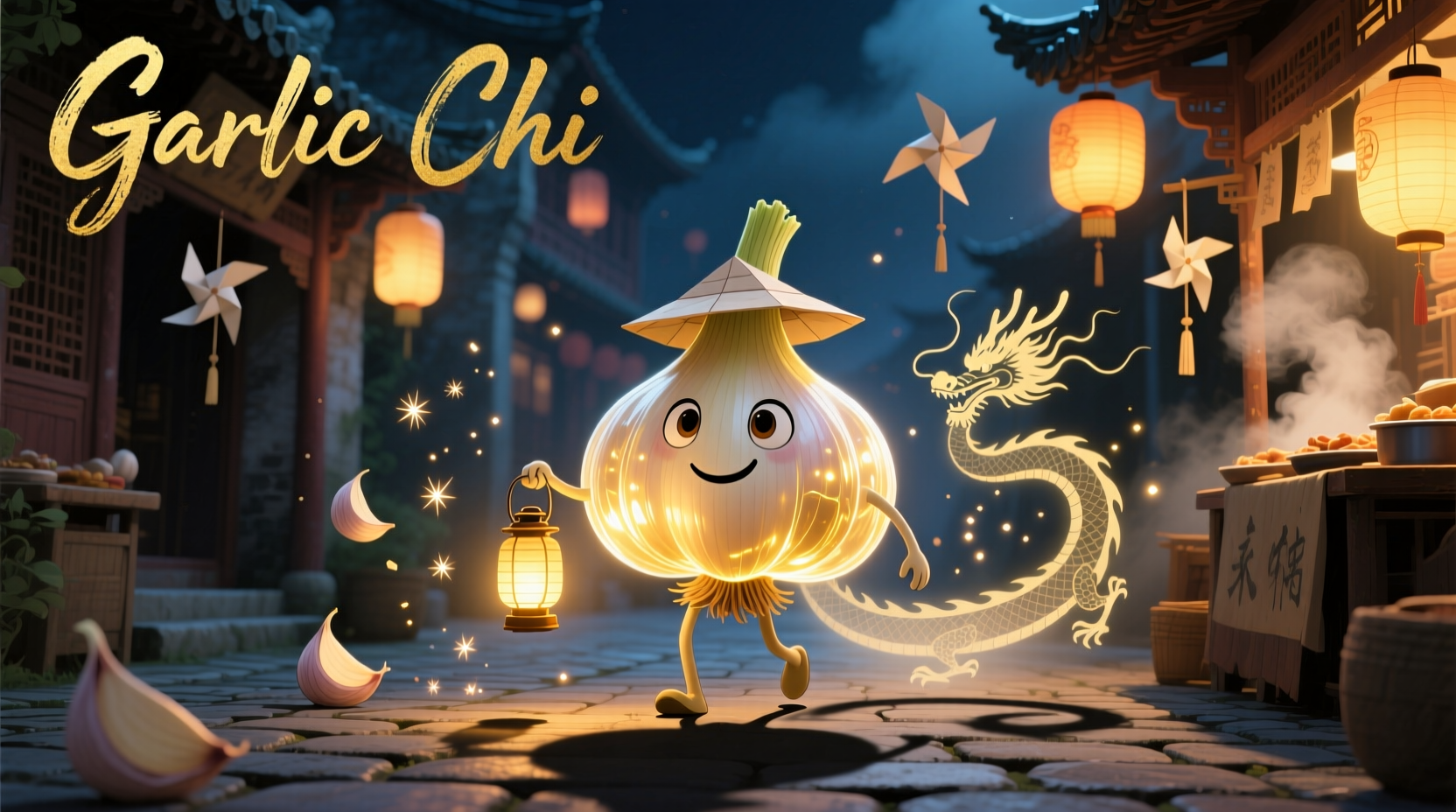When home cooks search for "garlic chi," they're typically seeking information about garlic chives—a fundamental ingredient in Chinese cuisine often misunderstood or misidentified. Unlike regular chives with their hollow, grass-like appearance, garlic chives feature flat, solid leaves and deliver a subtle garlic essence that transforms dishes without overwhelming heat. This comprehensive guide reveals everything you need to select, store, and cook with authentic garlic chives, drawing from centuries of Chinese culinary tradition.
What Makes Garlic Chives Unique in Chinese Cooking
Garlic chives (Allium tuberosum) represent one of China's most treasured culinary herbs, cultivated for over 3,000 years according to agricultural records from the Zhou Dynasty. Their distinctive flat leaves and mild garlic aroma make them indispensable in regional Chinese cooking, particularly in Shandong, Sichuan, and Cantonese cuisines. Unlike garlic cloves that deliver intense pungency, garlic chives provide nuanced flavor that enhances rather than dominates dishes.
The confusion around "garlic chi" typically stems from mishearing the Mandarin term jiu cai (韭菜), which Westerners sometimes misinterpret as "garlic chi." This linguistic mix-up has led many home cooks to search for non-existent ingredients or substitute incorrectly, compromising authentic flavor profiles.
| Characteristic | Garlic Chives | Regular Chives | Green Onions |
|---|---|---|---|
| Botanical Name | Allium tuberosum | Allium schoenoprasum | Allium fistulosum |
| Leaf Shape | Flat, solid blades | Hollow, round tubes | Hollow tubes (green part) |
| Flavor Profile | Mild garlic essence | Delicate onion flavor | Sharp onion taste |
| Primary Culinary Use | Stir-fries, pancakes, dumplings | Garnishes, egg dishes | Stir-fries, soups, garnishes |
Historical Journey of Garlic Chives in Chinese Cuisine
Garlic chives have evolved from ancient medicinal herb to culinary staple through distinct historical phases:
- Zhou Dynasty (1046-256 BCE): First documented cultivation in Chinese agricultural texts as both food and medicine
- Tang Dynasty (618-907 CE): Became integral to imperial cuisine, featured in banquet dishes
- Ming Dynasty (1368-1644): Spread throughout Southeast Asia via trade routes
- 20th Century: Introduced to Western kitchens through Chinese immigrant communities
- Present Day: Recognized globally as a specialty ingredient in authentic Chinese cooking
This historical progression demonstrates why garlic chives remain non-negotiable in traditional Chinese recipes—they've been refined through centuries of culinary practice to deliver specific flavor profiles that substitutes simply cannot replicate.

Selecting and Storing Garlic Chives Properly
Choosing quality garlic chives requires attention to specific visual and textural cues that indicate freshness and flavor potential. At Asian markets or well-stocked grocery stores, look for:
- Vibrant green color without yellowing or browning
- Firm, crisp texture when gently bent
- White bulb ends that feel solid, not mushy
- No signs of wilting or sliminess
Proper storage extends their shelf life significantly. Wrap unwashed garlic chives in a slightly damp paper towel, place in a perforated plastic bag, and store in your refrigerator's vegetable drawer. This method maintains optimal humidity levels, preserving freshness for 7-10 days—nearly double the lifespan of improperly stored bunches.
Mastering Garlic Chive Cooking Techniques
The timing of garlic chive addition dramatically affects flavor development in Chinese cooking. Unlike regular chives that can be added at the end, garlic chives benefit from brief cooking to mellow their flavor while retaining texture:
- Stir-fries: Add during the final 30-60 seconds of cooking
- Dumpling fillings: Use raw for maximum flavor impact
- Pancakes: Incorporate directly into batter before cooking
- Soups: Add just before serving to maintain vibrant color
Chef Liu Wei emphasizes that "the magic of garlic chives lies in their transformation under heat—they mellow from sharp to sweet, creating complex flavor layers that raw garlic cannot achieve." This principle explains why many authentic Chinese recipes specify garlic chives rather than garlic cloves for certain applications.
Nutritional Benefits Backed by Research
According to USDA FoodData Central, garlic chives offer impressive nutritional advantages over their allium relatives. A 100g serving provides:
- 145% of daily vitamin K requirement (vs. 21% in regular chives)
- Significantly higher calcium content than regular chives
- Rich in allicin compounds with documented cardiovascular benefits
- Contains quercetin, a flavonoid with antioxidant properties
Research published in the Journal of Agricultural and Food Chemistry confirms that the unique sulfur compounds in garlic chives demonstrate stronger antioxidant activity than those found in common chives, supporting their traditional use in Chinese medicinal cuisine.
Authentic Garlic Chive Pancake Recipe
Experience the true flavor of garlic chives with this simplified version of the classic Chinese street food:
Ingredients
- 2 cups all-purpose flour
- 3/4 cup warm water
- 1 bunch fresh garlic chives (about 1 cup chopped)
- 1 tbsp sesame oil
- 1/2 tsp salt
- 2 tbsp vegetable oil for cooking
Instructions
- Mix flour and warm water to form smooth dough, rest 30 minutes
- Chop garlic chives into 1/4-inch pieces
- Roll dough into thin rectangle, brush with sesame oil
- Sprinkle chives and salt evenly over surface
- Roll dough tightly, coil into spiral, flatten gently
- Cook in hot skillet with vegetable oil until golden brown on both sides
The key to perfect texture is maintaining medium heat—too high causes burning before the chives cook through, while too low makes the pancake greasy. Serve immediately for optimal crispness.
Common Substitution Mistakes to Avoid
While cooking with garlic chives, understand their specific culinary boundaries:
- Never substitute regular chives—their hollow structure and different flavor profile won't replicate the authentic taste
- Avoid using garlic cloves when a recipe specifies garlic chives—they provide different flavor chemistry
- Green onions work only in emergencies and require significant quantity adjustments
- Dried garlic chives lose essential oils and shouldn't replace fresh in authentic recipes
These substitution boundaries matter because Chinese cuisine relies on precise flavor balances developed over centuries. As culinary historian Dr. E.N. Anderson notes in The Food of China, "the distinction between similar alliums represents one of the most sophisticated elements of Chinese regional differentiation."











 浙公网安备
33010002000092号
浙公网安备
33010002000092号 浙B2-20120091-4
浙B2-20120091-4